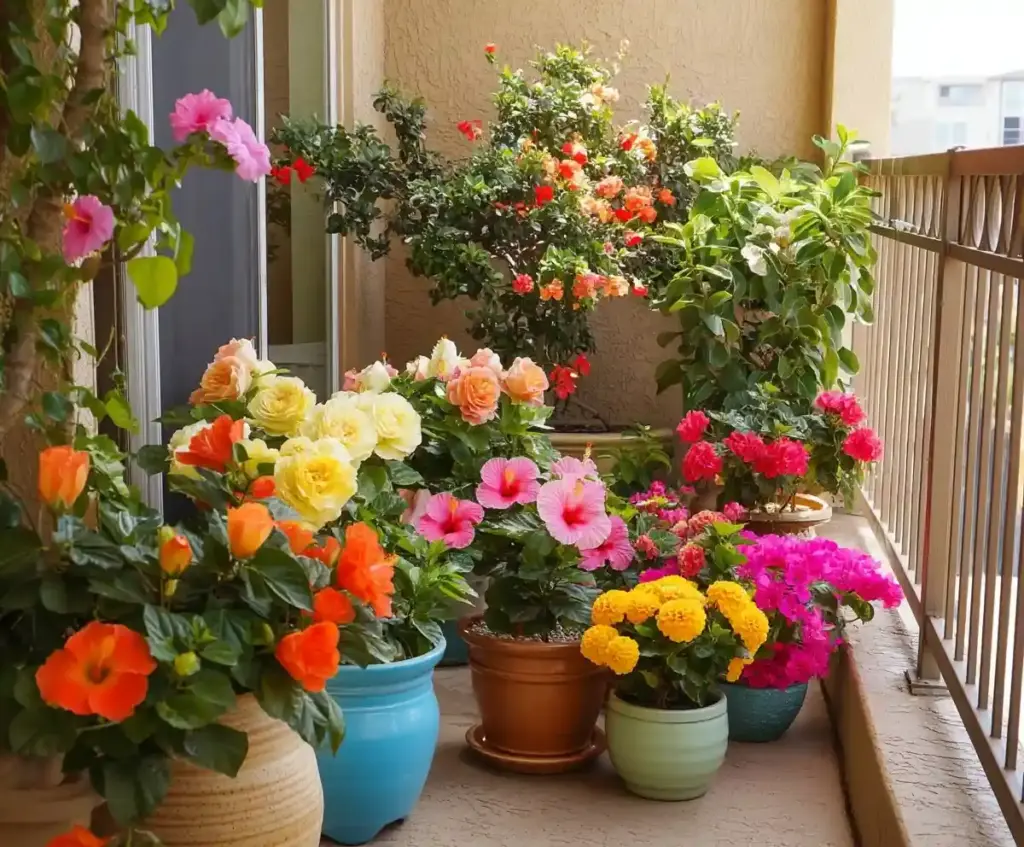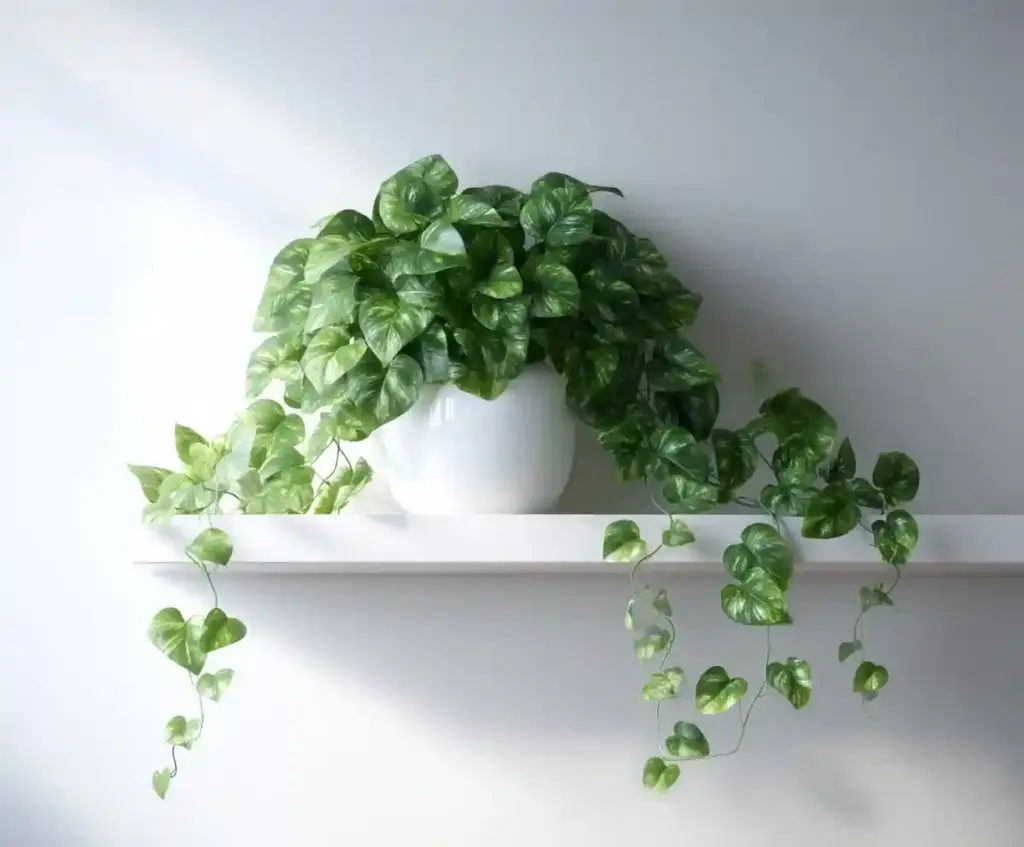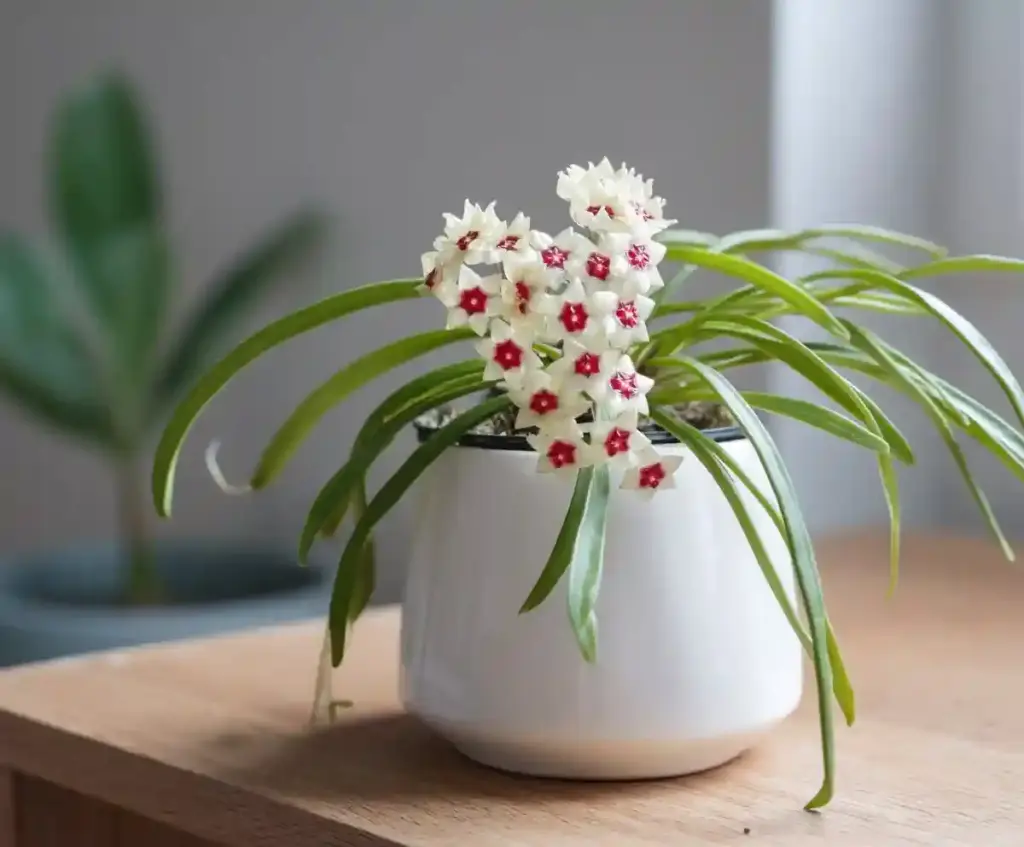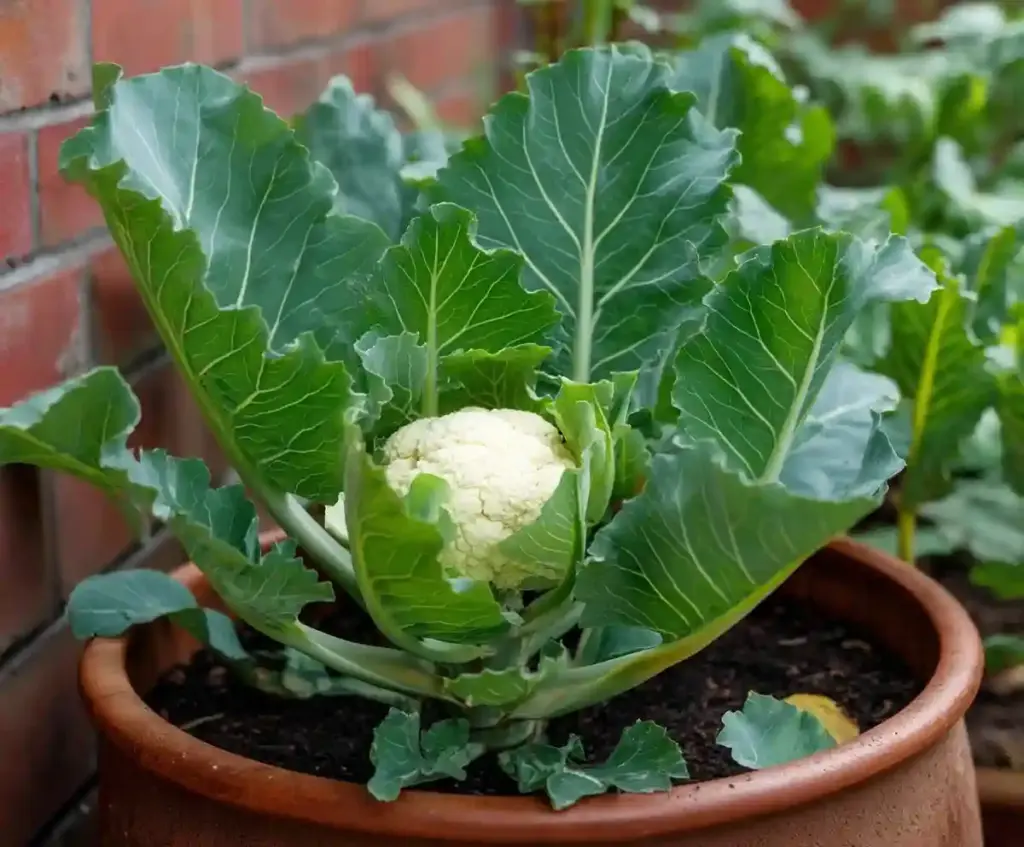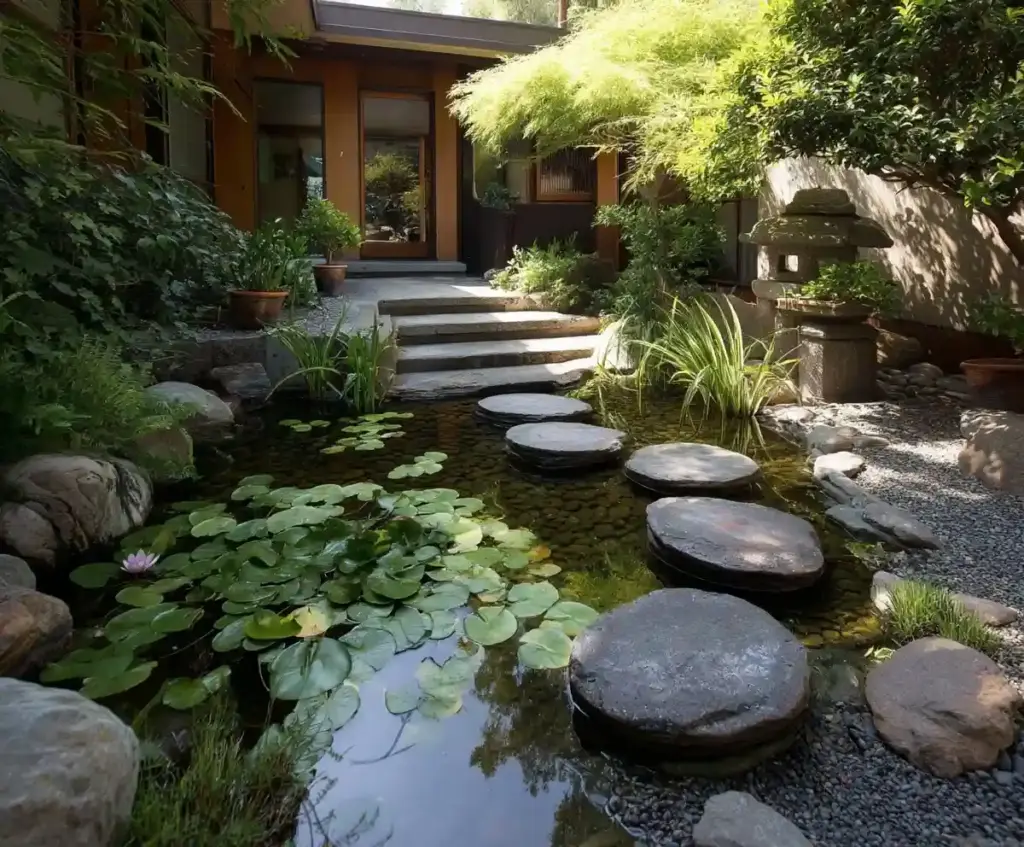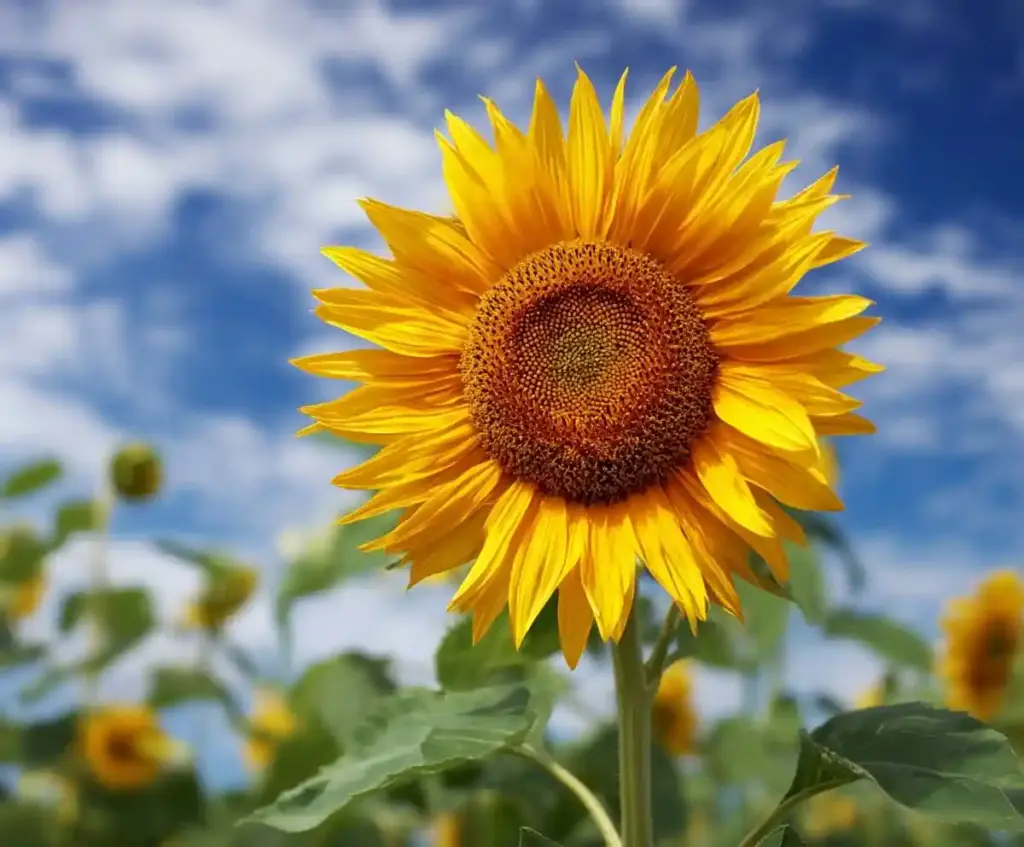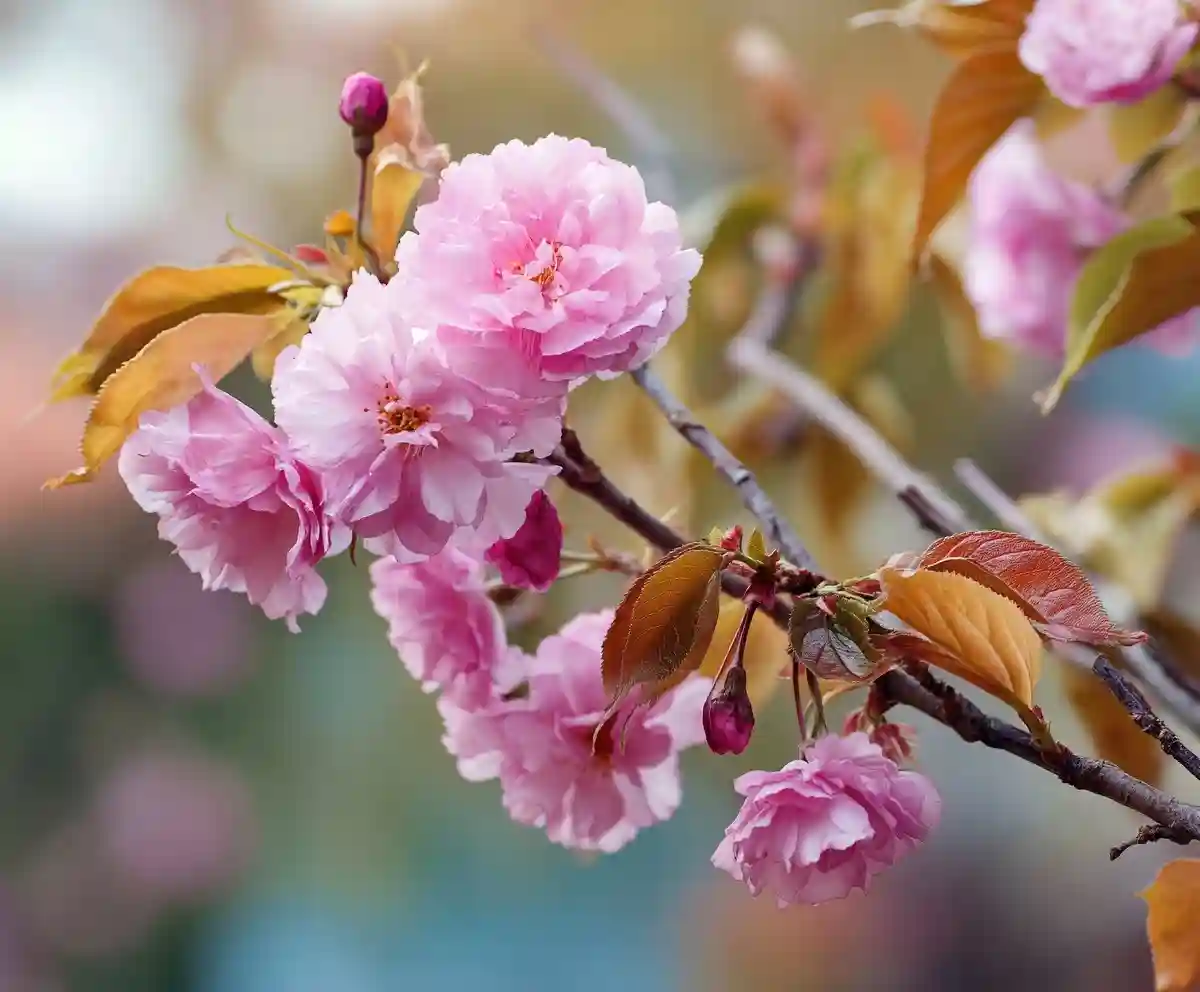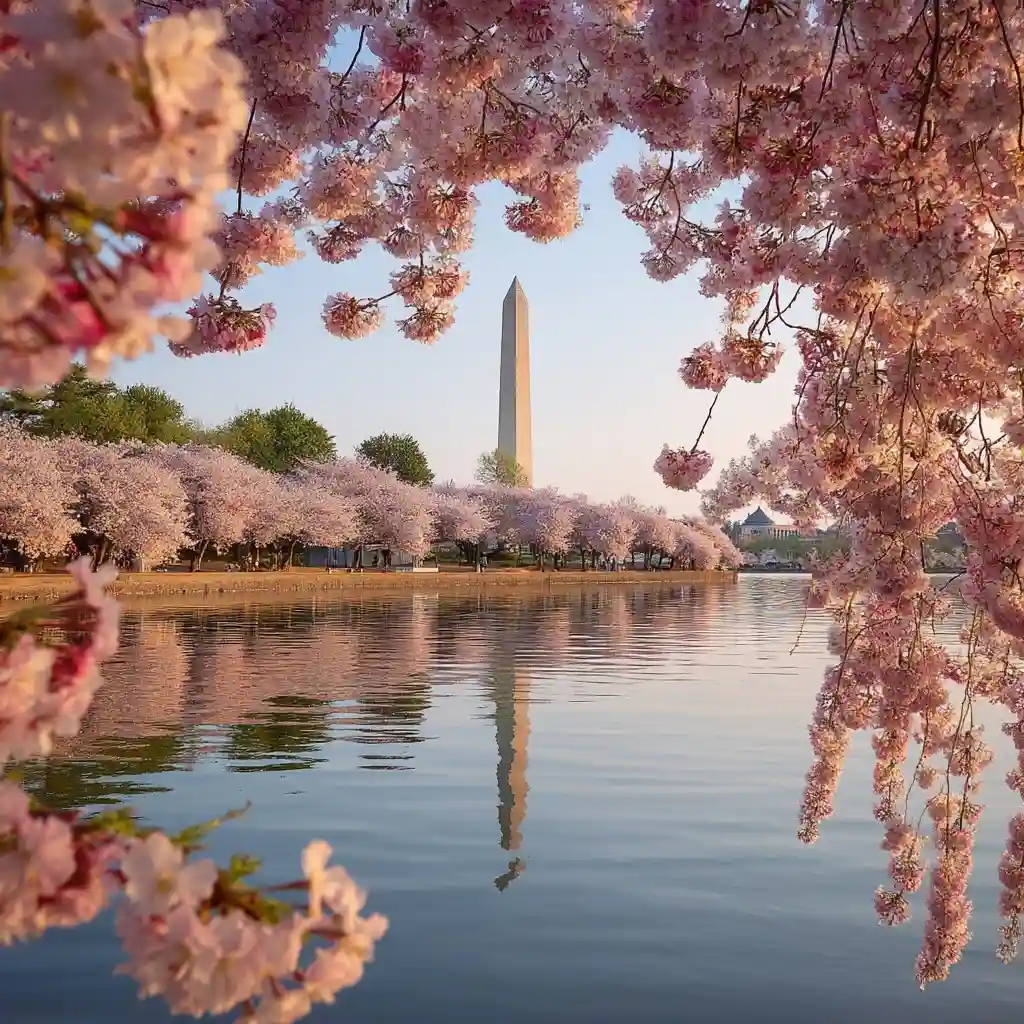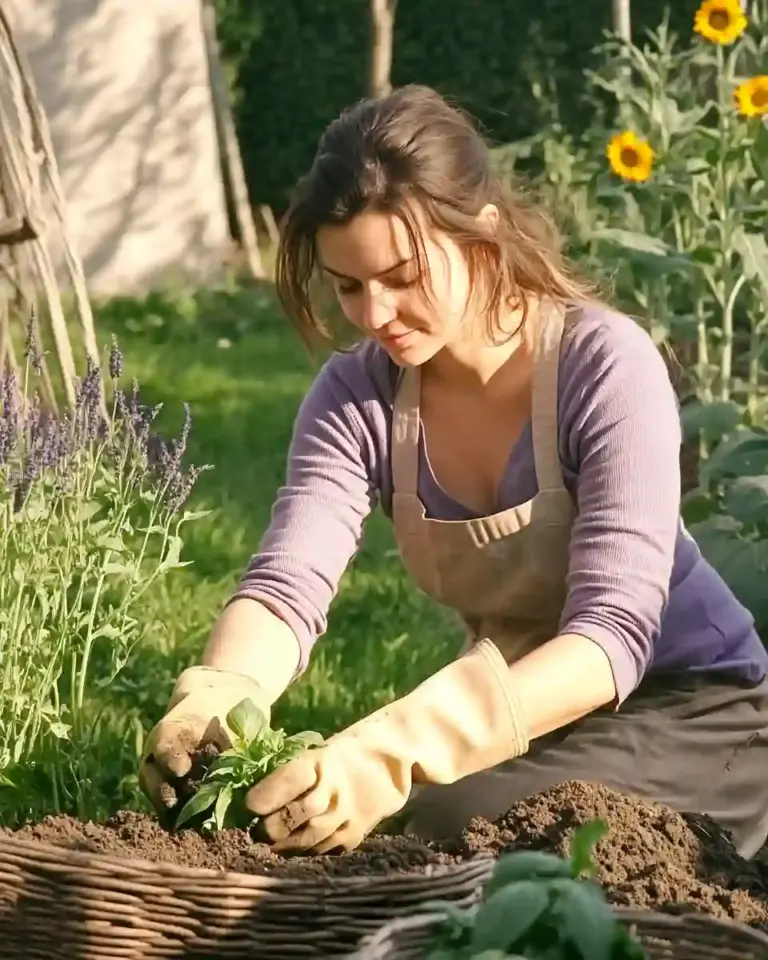Cherry Tree varieties in Washington, DC are more than just seasonal eye candy—they’re living pieces of history and horticultural beauty. Every spring, the nation’s capital bursts into bloom as over 3,800 cherry trees blanket the National Mall and surrounding areas in soft whites and pinks.
From the iconic Yoshino trees encircling the Tidal Basin to the vibrant Kwanzan blossoms lining East Potomac Park, the types of cherry trees in Washington DC represent both botanical diversity and international friendship. Whether you’re planning a spring visit or planting your own tree at home, knowing the characteristics of each type will help you appreciate their unique traits year-round.
Each species has its own story, bloom time, and shape—some upright and formal, others weeping and whimsical. In this guide, we’ll walk through where they grow, what they look like, and why they matter.
Table of Contents
Cherry Tree Types & Locations
Washington, DC is home to a carefully curated collection of cherry trees, most of which were part of a historic gift from Japan in 1912. This iconic gesture brought over 3,000 cherry trees to the U.S. capital, forever shaping its spring landscape.
Today, the National Park Service manages around 3,800 cherry trees, spread primarily across three major areas:
Tidal Basin
The most famous viewing spot, the Tidal Basin is almost entirely ringed with Yoshino cherry trees. These trees produce delicate, cloud-like white blossoms that transform the area each spring into a soft, glowing panorama. You’ll also find scattered Akebono and Weeping Cherry trees here, adding a subtle touch of pink to the otherwise white bloom.
East Potomac Park
This long, scenic strip of land between the Potomac River and Washington Channel features a diverse mix. Here, Kwanzan cherry trees take center stage, blooming later than Yoshinos and offering dense clusters of double pink blossoms. You’ll also find the rarer Takesimensis, Fugenzo, and Shirofugen varieties flourishing in this park, many of which are currently under observation for their resilience to local conditions.
Washington Monument Grounds
Just north of the Tidal Basin, the grassy areas surrounding the Washington Monument host a continuation of the Yoshino cherry tree display. The trees here blend seamlessly into the National Mall’s sweeping views, creating a perfect photo backdrop in early April.
Cherry Tree Field Guide
🌿 Yoshino Cherry Tree (Prunus × yedoensis)
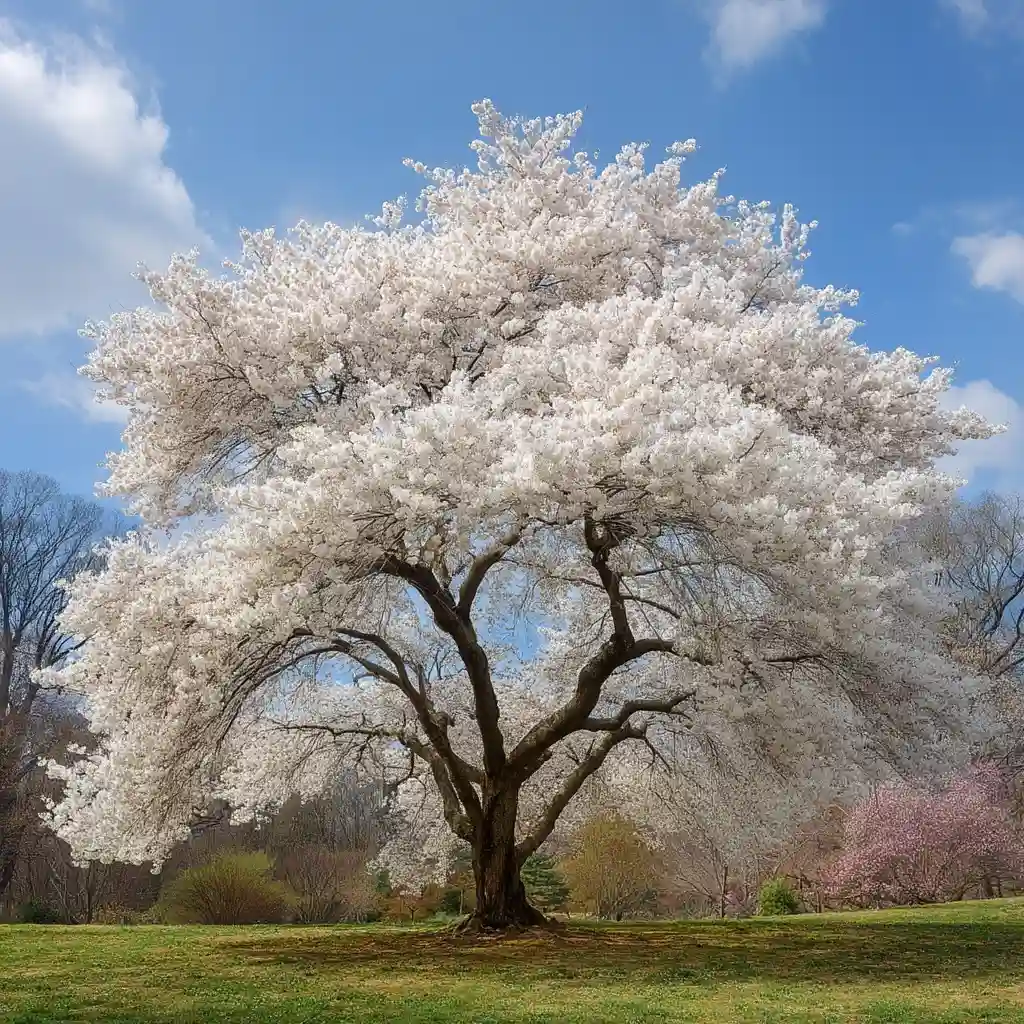
~70% of DC’s cherry trees
The Yoshino cherry tree dominates the landscape in Washington, DC. Known for its graceful, wide-spreading branches, this tree matures to around 30–50 feet tall and creates the signature cloud-like bloom around the Tidal Basin each spring.
- Flowers: White, single blossoms in clusters of 2 to 5
- Scent: Mild almond fragrance
- Bloom Time: Late March to early April
- Hardiness Zone: 6 (0 to -10°F)
Originally bred in Japan in the late 1800s, the Yoshino is the most recognized cherry tree during the National Cherry Blossom Festival. It symbolizes renewal and friendship and remains one of the most beloved flowering trees in the world.
🌿 Kwanzan Cherry Tree (Prunus serrulata ‘Kwanzan’)
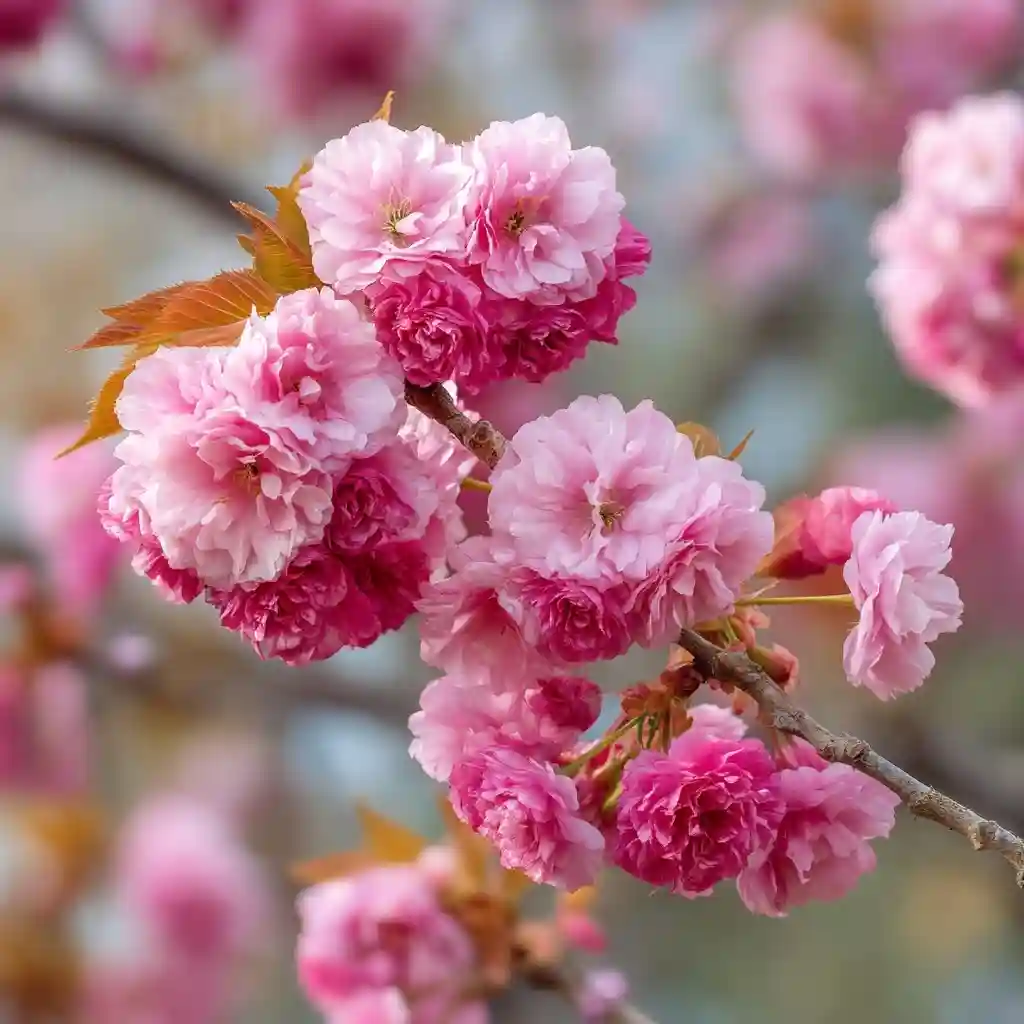
~13% of DC’s cherry trees
The Kwanzan cherry tree is known for its show-stopping pink double blossoms. Unlike the Yoshino, it blooms later—usually in mid-April—making it a perfect follow-up act to the Tidal Basin’s peak bloom.
- Flowers: Double pink, pendulous clusters (30+ petals)
- Size: Up to 30 feet tall with upright, vase-like form
- Hardiness Zone: 5 (-10 to -20°F)
This cherry tree grows mainly in East Potomac Park and offers brilliant color and structure. Its dense, layered blossoms give a lush, ornamental appearance that gardeners often favor for residential landscapes.
🌿 Akebono Cherry Tree (Prunus × yedoensis ‘Akebono’)
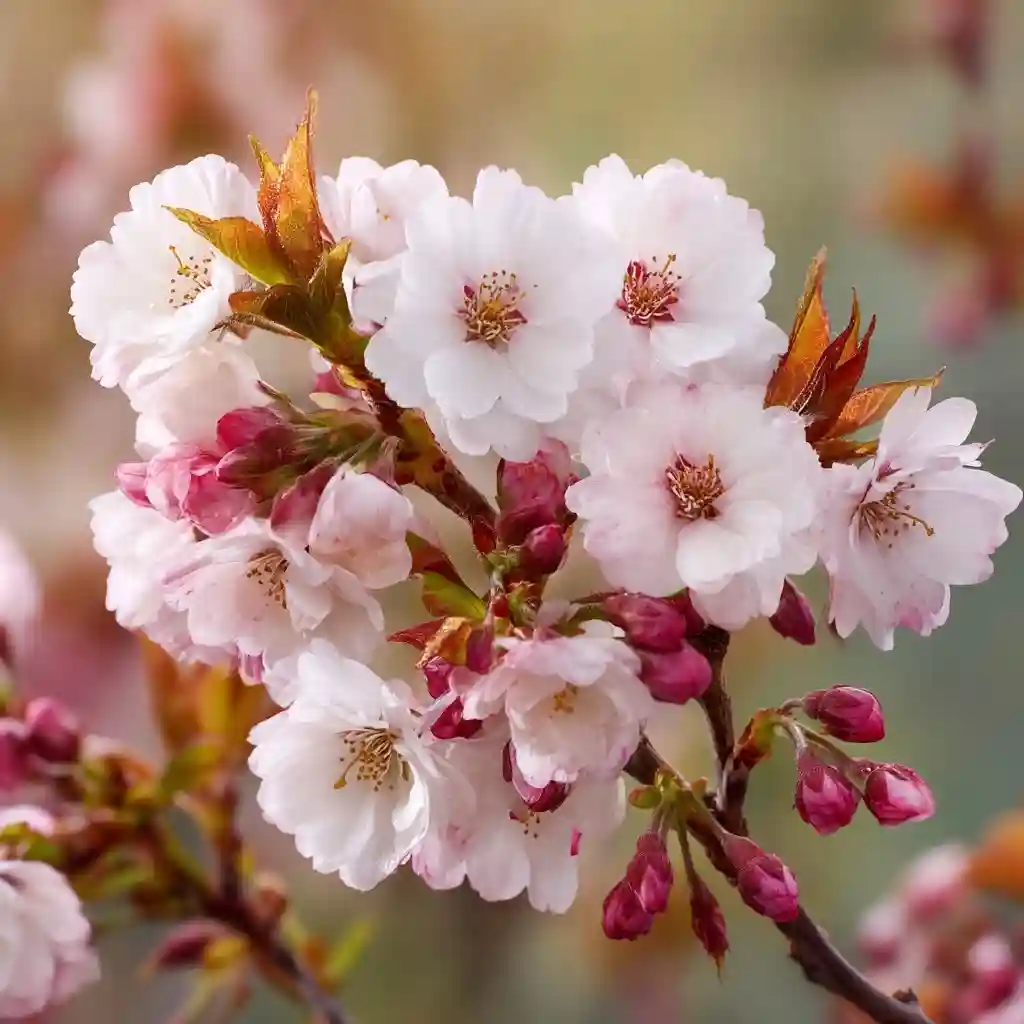
~3% of DC’s cherry trees
The Akebono cherry tree is a soft-pink mutation of the Yoshino and often blends seamlessly with its cousin during peak bloom. You’ll find it adding warm undertones to the otherwise white Tidal Basin canopy.
- Flowers: Pale pink, single blooms fading to white
- Size: Similar to Yoshino (30–50 feet tall)
- Bloom Time: Late March to early April
- Hardiness Zone: 6 (0 to -10°F)
Although it’s gradually being replaced in the nursery trade, the Akebono still holds a quiet charm with its subtle coloring and gentle shape.
🌿 Weeping Cherry Tree (Prunus subhirtella var. pendula)
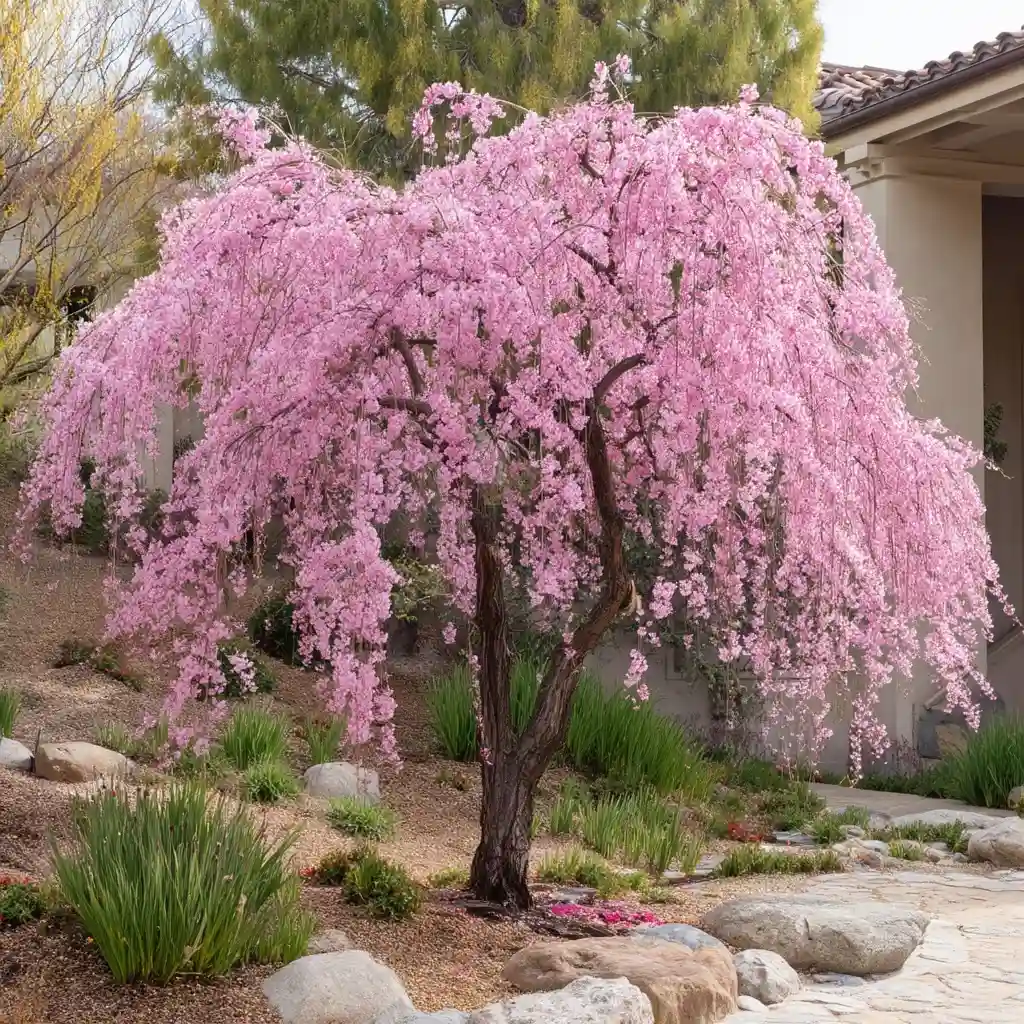
~2.4% of DC’s cherry trees
The Weeping cherry tree is a favorite for its elegant, cascading branches and artistic form. It creates a dramatic look in gardens and park settings, flowering just before the Yoshinos.
- Flowers: Varies—single or double, pink to white
- Size: 20–40 feet tall with weeping crown
- Hardiness Zone: 5 (-10 to -20°F)
Different cultivars include ‘Pendula Rosea’ and ‘Snowfozam,’ making this cherry tree a highly versatile ornamental option.
🌿 Takesimensis Cherry Tree (Prunus takesimensis)
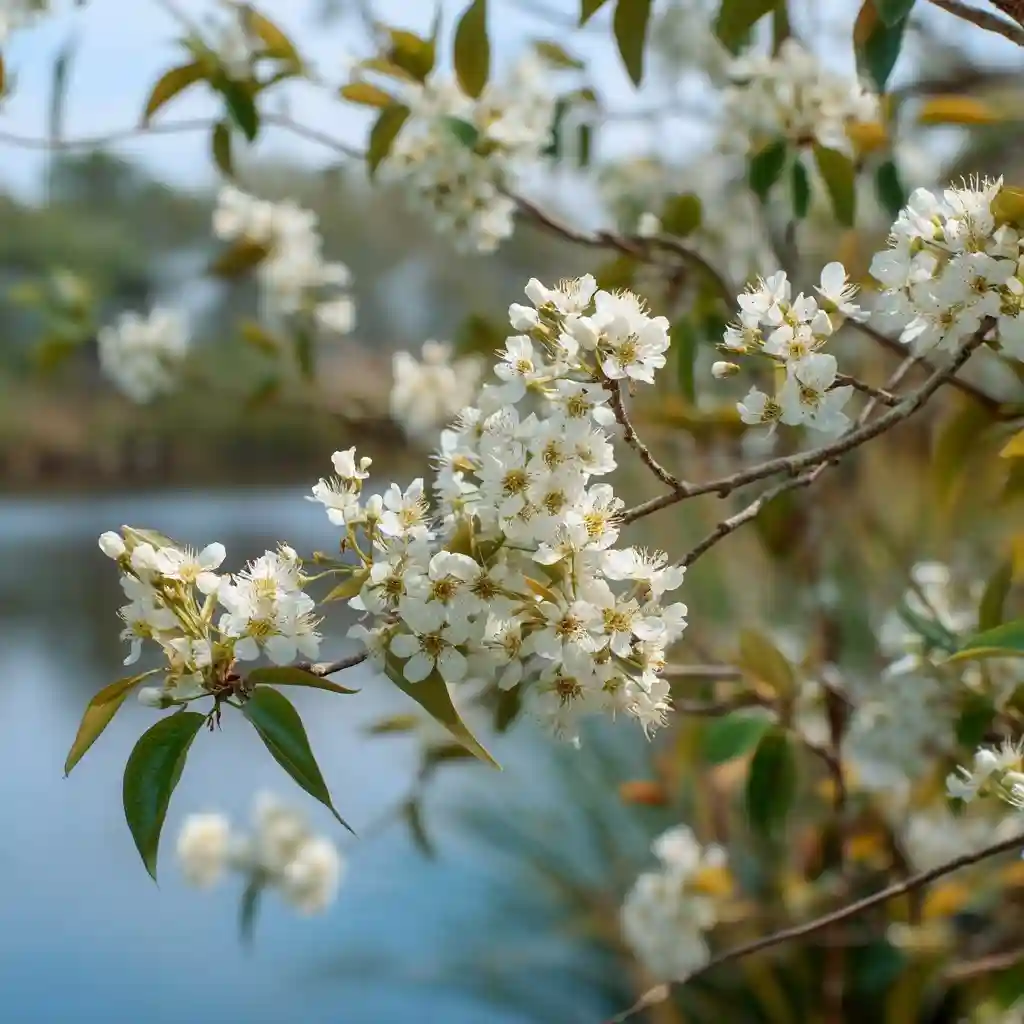
~5% of DC’s cherry trees
Native to Korea’s Ulleungdo Island, the Takesimensis cherry tree is valued for its hardiness and moisture tolerance. It’s currently being observed in East Potomac Park for how well it handles the region’s variable weather.
- Flowers: Bright white clusters with short stems
- Size: 30–40 feet at maturity, upright-spreading shape
- Bloom Time: Around same time as Yoshino
- Hardiness Zone: 6 (0 to -10°F)
This cherry tree stands out with its ability to thrive in wet conditions, making it a strong candidate for areas with poor drainage or frequent rain.
🌿 Autumn Flowering Cherry Tree (Prunus subhirtella var. autumnalis)
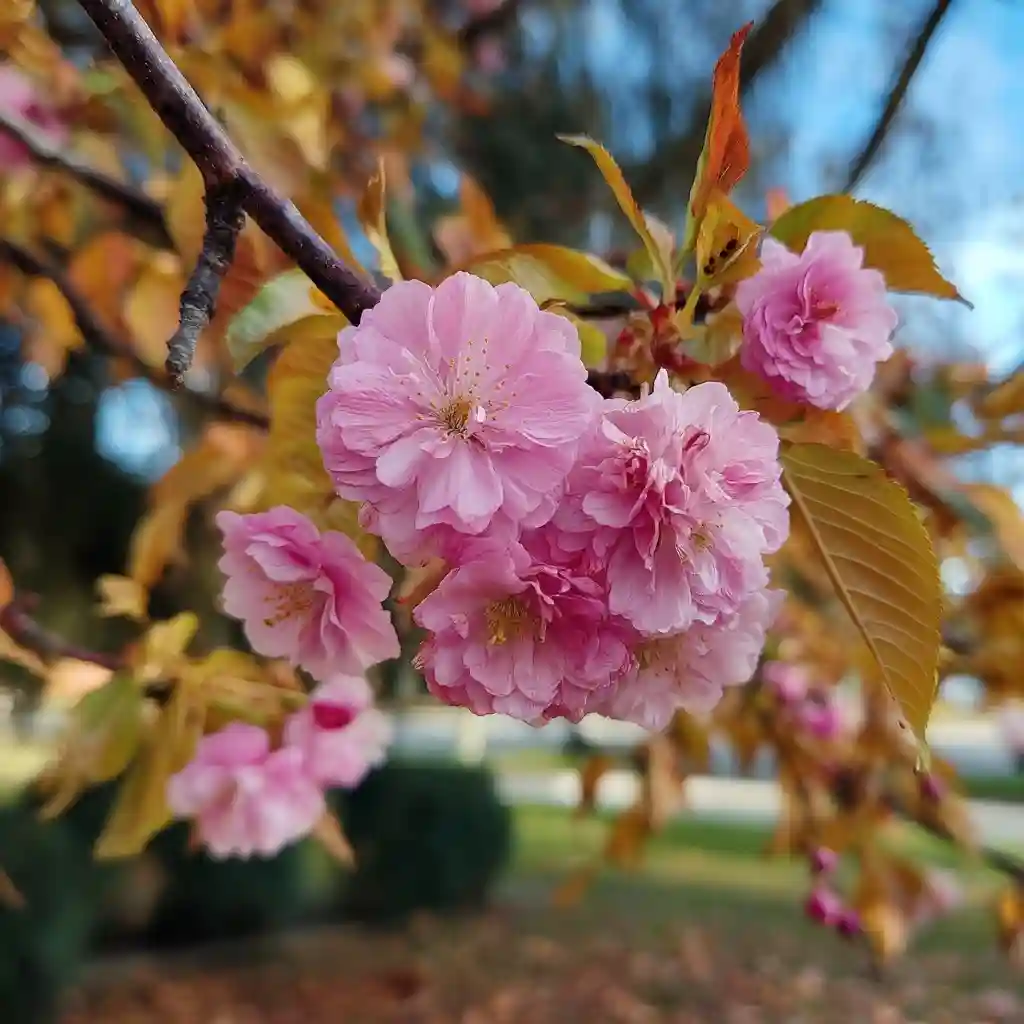
~3% of DC’s cherry trees
One of the most unique species, the Autumn Flowering cherry tree can bloom twice a year—first with sporadic blossoms during warm spells in fall and winter, and then fully again in spring.
- Flowers: Semi-double pink blooms
- Size: 25–30 feet tall with a 15–20 foot spread
- Hardiness Zone: 4 (-20 to -30°F)
It’s an excellent choice for adding unexpected bursts of color when most trees have gone dormant.
🌿 Usuzumi Cherry Tree (Prunus spachiana f. ascendens)
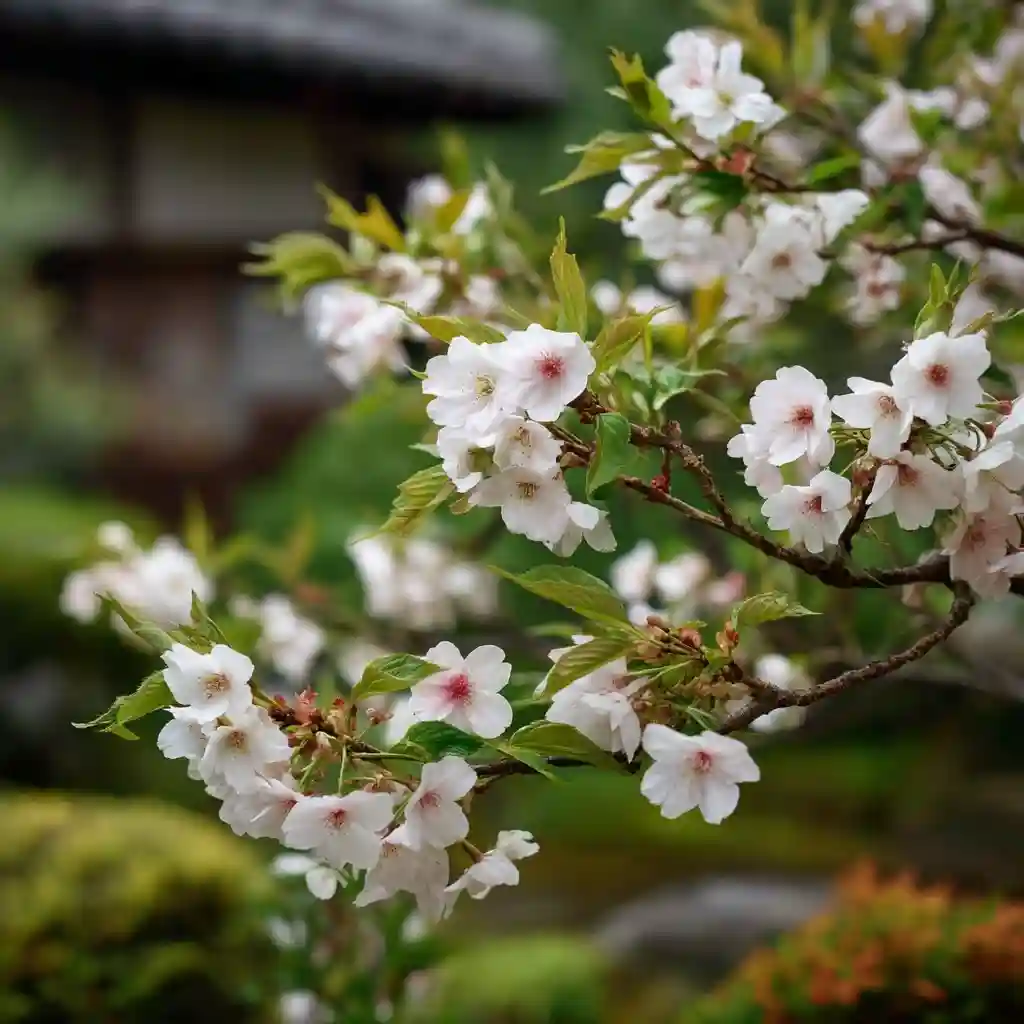
~1.3% of DC’s cherry trees
This ancient variety traces its roots to a legendary tree in Japan believed to be over 1,400 years old. The Usuzumi cherry tree planted in West Potomac Park was grown from that historic specimen.
- Flowers: White blossoms that turn pale gray as they age
- Size: Up to 40 feet with a gracefully rising crown
- Hardiness Zone: 6 (0 to -10°F)
Its shifting blossom color and fascinating origin story make it a deeply symbolic cherry tree.
🌿 Sargent Cherry Tree (Prunus sargentii)
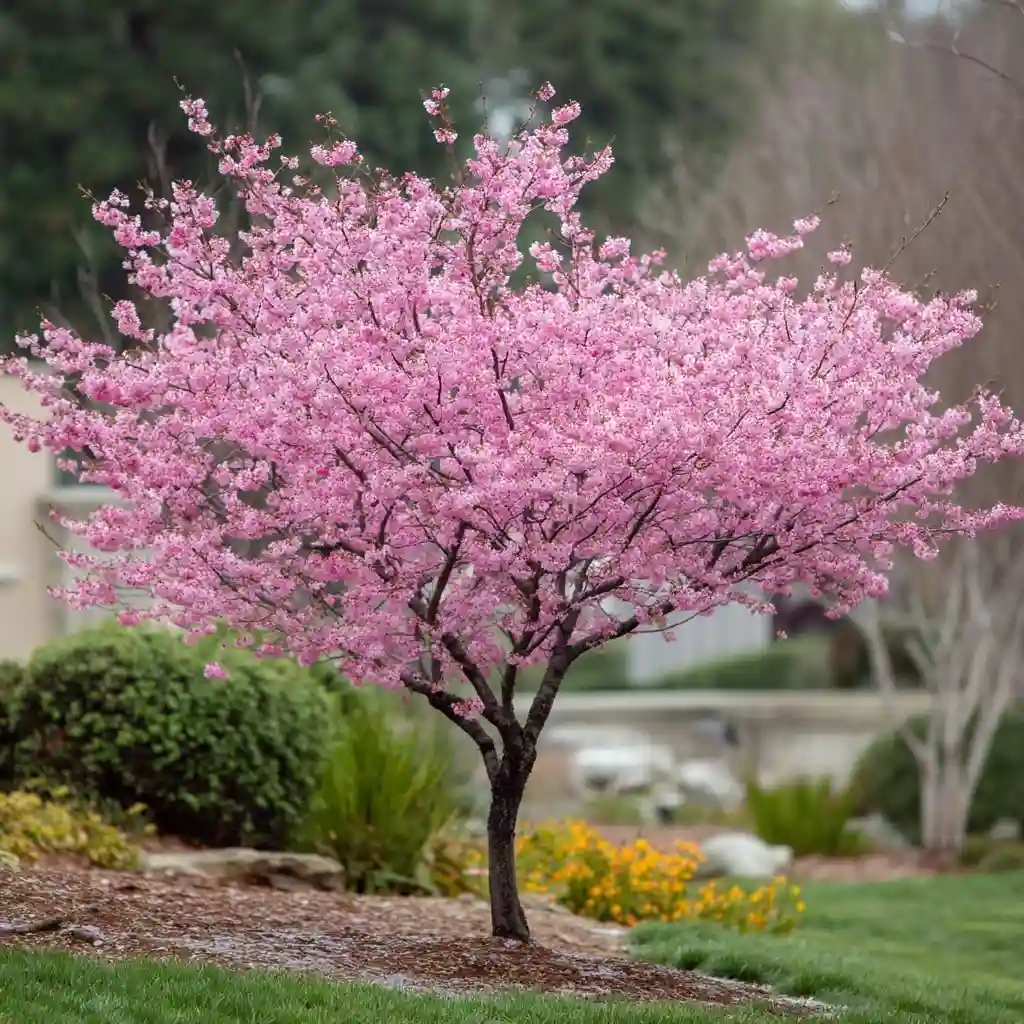
<1% of DC’s cherry trees
The Sargent cherry tree is known for its vibrant deep pink blossoms and robust, symmetrical structure. Though rare in DC, its beauty makes it a standout in any landscape.
- Flowers: Single, deep pink blossoms in clusters
- Size: 40–50 feet with spreading branches
- Hardiness Zone: 4 (-20 to -30°F)
It’s a cold-hardy option that performs well in northern climates.
🌿 Fugenzo Cherry Tree (Prunus serrulata ‘Fugenzo’)
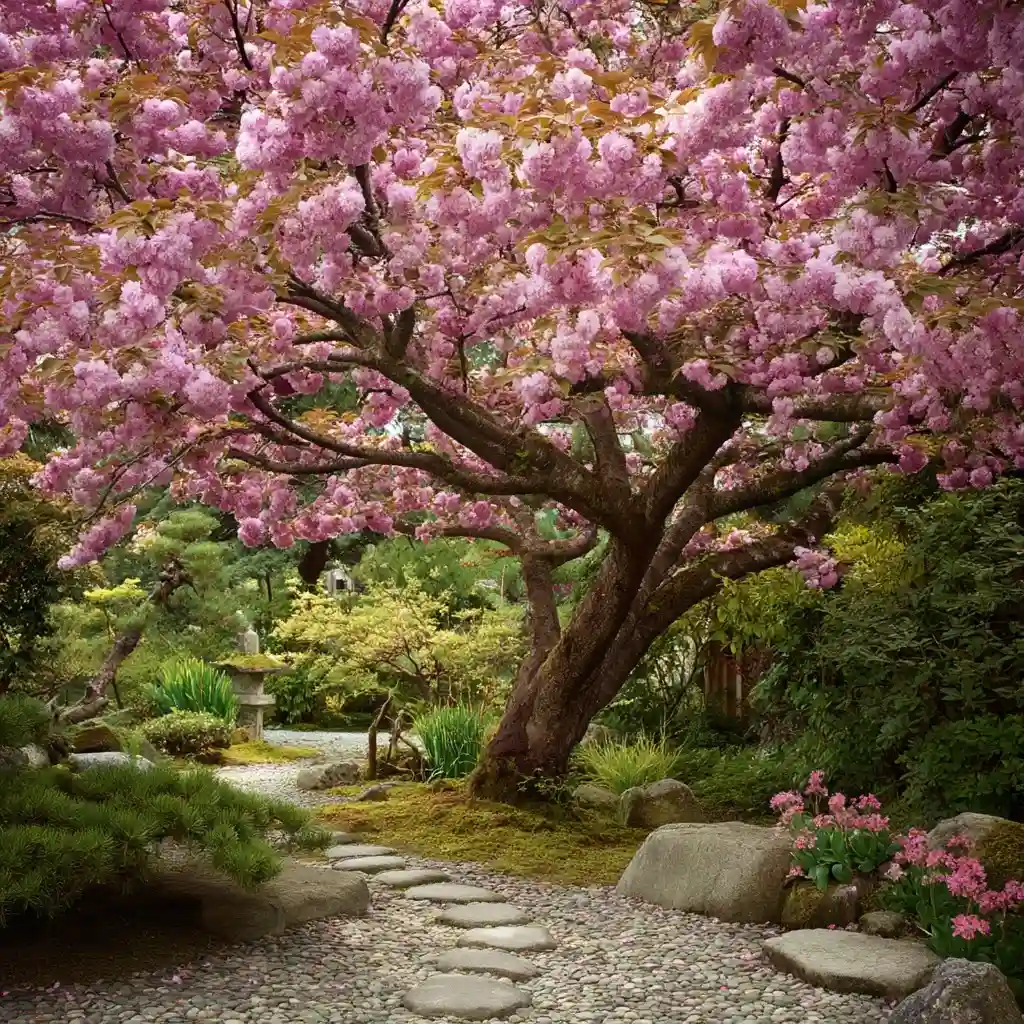
Percentage not specified
With roots in ancient Japanese cultivation, the Fugenzo cherry tree is one of the oldest named cherry cultivars. Its lush, rose-pink blossoms are full and layered, offering a romantic appearance.
- Flowers: Double blossoms (about 30 petals), rosy pink
- Size: Up to 20 feet tall and wide with a horizontally spreading crown
- Hardiness Zone: 6 (0 to -10°F)
Its flowers never fade to white, distinguishing it from many other double-blooming cherry varieties.
🌿 Okame Cherry Tree (Prunus × ‘Okame’)
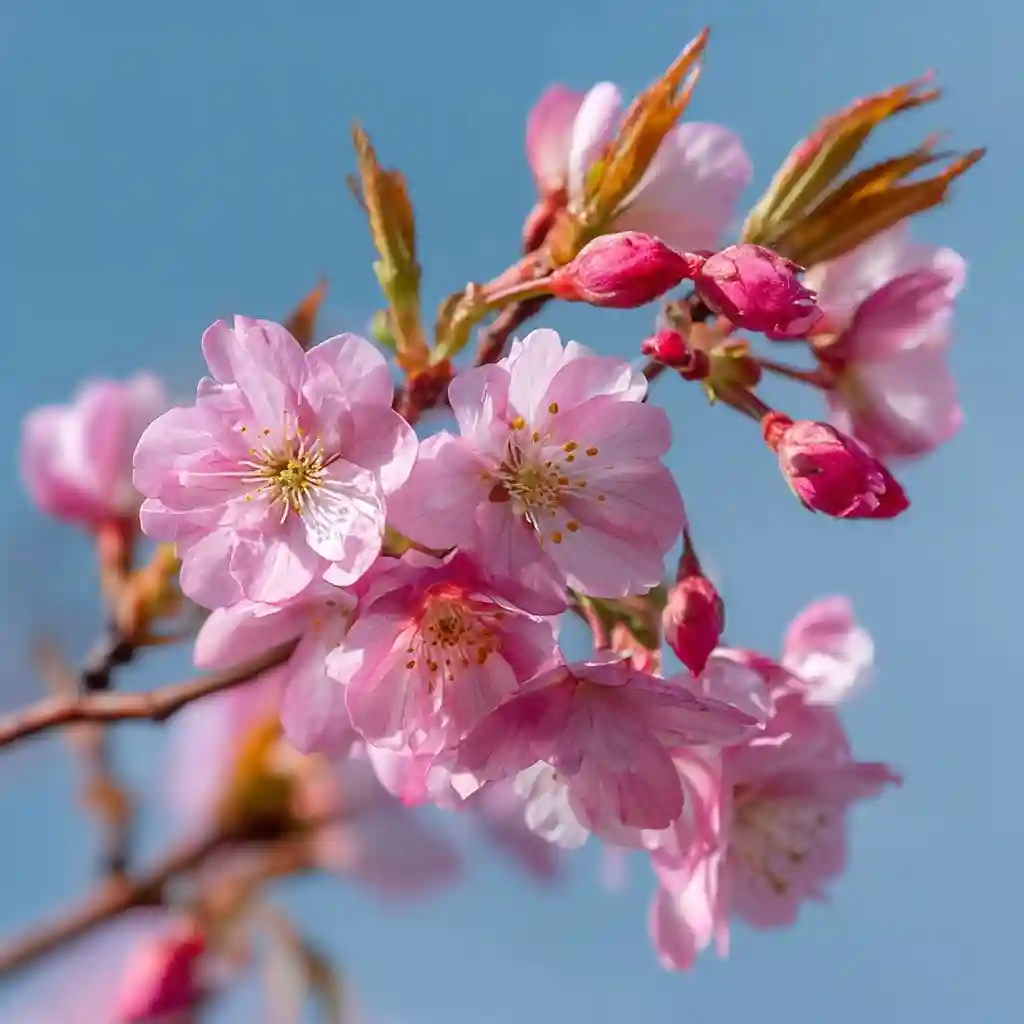
<1% of DC’s cherry trees
One of the earliest to bloom each year, the Okame cherry tree kicks off the season with rich pink color before most other trees awaken.
- Flowers: Semi-double, pink
- Size: 25 feet tall with a 20-foot spread
- Hardiness Zone: 5–6 (-10 to 0°F)
This compact cherry tree is ideal for smaller gardens where early color is desired.
🌸 Conclusion
Whether you’re admiring their springtime bloom or choosing one for your garden, every cherry tree variety offers something unique. From the cloud-like Yoshino to the rare Usuzumi, these trees symbolize beauty, resilience, and cultural connection.
Understanding the types of cherry trees in Washington DC not only enhances your appreciation of the National Cherry Blossom Festival but also helps you select the right species for your own landscape. Whether you’re drawn to bold double blossoms or delicate weeping forms, there’s a cherry tree that fits your vision.
🌸 Looking to add cherry trees to your garden? Browse our planting guides and seasonal care tips to get started.
(Consider linking this to your internal resources like “How to Plant a Cherry Tree” or “Spring Flowering Tree Care Guide.”)
❓ Frequently Asked Questions (FAQ)
What is the most common cherry tree in Washington, DC?
The Yoshino cherry tree is the most common, making up around 70% of all cherry trees in the city. Its white, cloud-like blossoms surround the Tidal Basin during peak bloom each spring.
When do cherry trees bloom in Washington, DC?
Most cherry trees in DC bloom between late March and early April, with peak bloom typically occurring around the end of March. Some varieties, like the Kwanzan, bloom later in mid-April.
Which cherry tree blooms the earliest?
The Okame cherry tree is the earliest bloomer in Washington, often flowering in early March—well before the more famous Yoshino or Kwanzan varieties.
Can I plant a cherry tree in my backyard?
Yes! Many types of cherry trees, such as Kwanzan, Weeping, and Autumn Flowering, do well in residential gardens. Choose a variety based on your climate, soil conditions, and available space.
How long does a cherry tree live?
Lifespan depends on the variety. Most ornamental cherry trees live between 30 to 40 years, while some, like the Usuzumi, are known for their exceptional longevity in the right conditions.
Do cherry trees produce edible fruit?
The cherry trees in Washington, DC are ornamental, meaning their fruit (if any) is not meant for eating. If you’re interested in fruit-bearing varieties, look into sour or sweet cherry cultivars like Prunus avium or Prunus cerasus.
What’s the difference between Yoshino and Kwanzan cherry trees?
Yoshino: White, single-petal blooms; blooms earlier; wide spreading
Kwanzan: Pink, double blooms; blooms later; more upright form
Both are stunning, but their bloom times and flower structures differ significantly.
🌿 Love gardening inspiration? Follow me on Pinterest for bold plant ideas, tips, and seasonal color!
More Posts
